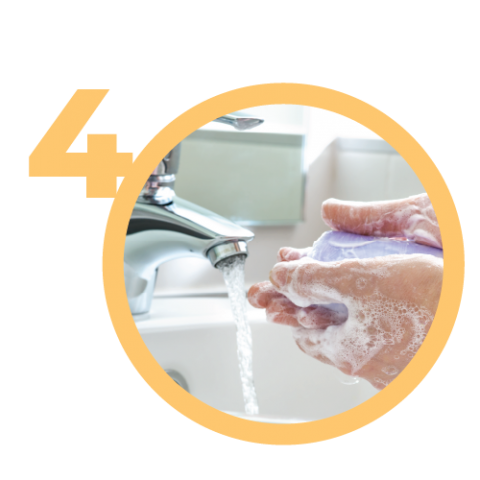Mask: When should I wear one?
The Cree Board of Health recommends you wear a mask in certain situations to protect yourself and people around you, especially if you or others have vulnerable health or chronic medical conditions.
Face masks and forest fire smoke

-
A well-fitting N95 or KN95 mask offers protection from smoke caused by forest fires, when air quality is poor, and you have to spend extended time outdoors.
-
N95 and KN95 masks are designed to filter fine particulate matter in the air, like fire smoke.
-
N95 and KN95 masks don't protect against gases that may be in forest fires, or forest fire smoke.
-
Medical masks and cloth masks don't offer the same protection against smoke as N95 or KN95 masks and are not recommended as protection against wildfire smoke if you are spending time outdoors.
-
N95 or KN95 masks are not recommended for extended use indoors (at the office or other non-clinical buildings).
How to adjust an N95 or K95 mask for a good fit
- N95 and KN95 masks have to fit snugly on the face. The mask has to be in contact with smooth skin to work properly.
- Masks will seal properly for people with beards or facial hair.
How to test the fit of your N95 or KN95 mask:
- Place both hands completely over the mask and inhale sharply. The mask should pull against your face. If air leaks around your face or eyes, adjust the straps and nose piece until it doesn’t.
- Put your hands over the mask and breathe out sharply. No air should leak out. If air leaks out, readjust the nose piece and straps, and repeat these two checks until you are sure it fits.
Masks protect you and me from viruses
- Wearing an N95, KN95, or medical mask reduces the spread of airborne viruses such as COVID-19, the flu, and common colds.
- When masks are worn properly, they reduce the spread of virus droplets between people. A mask should cover your nose and mouth snugly.
- Masks are a good layer of protection when respiratory infections are circulating.
- Medical masks provide better protection than cloth masks.
I wear a mask to protect you. You wear a mask to protect me.
We wear masks as a sign of respect for each other.
When are masks recommended?
- If you are in an area experiencing heavy forest fire smoke and you have to spend time outdoors - wearing an N95 or KN95 mask is recommended.
- If you are returning home after an evacuation due to forest fires, wearing an N95/KN95 mask is recommended while cleaning your home.
- When you travel on the Cree Health Board charter between Eeyou Istchee and the South.
- When you go for medical care (at a CMC, hospital, or other health centres).
- If you visit or care for an elderly or immunocompromised person.
- Any time you need to be around someone who is sick (at home if you’re isolating with a family member who tested positive for COVID-19, or if someone in your home has the flu).
- When spending time indoors in public spaces.
- At work (if it’s required by your employer or jurisdiction).
How to put on a mask

Wash your hands with soap and warm water (for at least 20 seconds) or use hand sanitizer.

Put your mask on by holding the ties, elastics or straps.

Cover your nose and mouth with your mask and adjust mask under your chin.

Wash your hands with soap and warm water (for at least 20 seconds) or sanitize them after putting on your mask.
How to remove a mask

Wash your hands with soap and warm water (for at least 20 seconds) or use hand sanitizer.

Remove your mask using only the ties, elastics or straps.

When you get home:
If you are using a medical mask, N95 or KN95, throw it in the trash. Do not reuse.
If you are using a cloth mask, wash it in a washing machine or in boiling water, then dry it on a clothesline, or in the dryer.
Masking Do's and Don'ts

Wear a clean mask.

Wear your mask securely on your face, covering your nose and mouth.

Wear a mask if you feel sick or have symptoms, or if you've been in contact with someone who is sick.

Wash or sanitize your hands if you touch your mask.

Medical masks, N95, and KN95 masks should be thrown away after every use.
Cloth masks should be washed after every use.

Don't wear a soiled or moist mask.

Don't wear a mask under your chin.

Don't wear a mask under your nose.

Don't touch your face while wearing a mask.

Explore more

Adjust your activities during high levels of air pollution to protect yourselves and your family.

The COVID-19 virus is still circulating. Follow precautions to keep the circle of protection strong around our communities.


